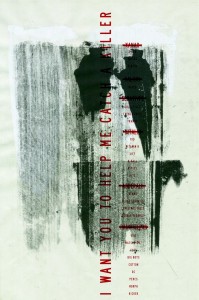Prescription drug abuse is a big problem in Utah.
In a February 2012 study, the Utah Department of Health reported that since 2006, more Utah residents have died from prescription drug overdoses than from car crashes each year.
For Chris Cutri, associate professor in BYU’s Department of Communications, the problem of prescription drug abuse hit home when his friend confided in him about his addiction.
In an effort to bring attention to this growing problem, Cutri brought the issue up to his graduate students. Together, they came up with and put together an art exhibition that will feature the work of BYU visual arts students’ pieces, which promote awareness to this increasing epidemic. The exhibit will be held on Friday, April 12, from 6 to 9 p.m., at Brian Kershisnik’s studio, located on 148 W. 600 South in Provo.
Cutri was so shocked by his friend’s revelation that he decided to bring awareness to the issue.

“He is young, and in speaking with him it really got me,” Cutri said. “I didn’t know anything about it, and so to hear that my friend was involved with this issue really opened my eyes. I couldn’t believe this was happening right in our backyard. In the four years that he was in high school, five people had died because of this.”
In studying the effects and gains of social media in our society, Cutri spoke to his graduate students in his social media class about this issue. They decided as a class to promote awareness of the issue through social media.
“We wanted to create conversation about prescription drug abuse, particularly in the state of Utah,” Cutri said. “We decided to not just study social media but how (we can) spread a message or talk about something via social media.”
Emily Collins, a graduate student from San Diego, Ca., explained that the goal of the exhibit is to break the stigma that comes along with prescription drug abuse.
“They say that you are three people away from knowing someone with a prescription drug abuse problem, so a friend of a friend,” Collins said. “When people think of someone with a prescription drug problem, they think of a homeless person that lives under a bridge, but it’s really not. It’s people’s neighbors, friends or mothers-in-law.”
Collins and her classmates felt that a visual element would be an impactful tool in bringing awareness to the issue. They came up with the idea of an art show where people could come and be made aware of this increasing problem.
“People are attracted to more visual things, and in this area there are a lot of things that go on,” Collins said. “We thought an art show would be a nice, visual way to connect with people emotionally and just bring awareness to the issue.”
With the help of six students from the visual arts department, the “RX Art Show” was put together.
Dylan Burt, a visual arts major from Portland, Ore., is one of the six students whose pieces will be featured at the art exhibition. She expressed appreciation for being given the opportunity to create a piece for an important topic.
“Creating art is an opportunity to create conversation, and what better conversation to create than a topic that is a rapidly growing problem not just in Utah but in our country,” Burt said.
In addition to the art show, a Facebook event page, Tumblr and Pinterest have been created in order to promote online awareness on the issue.
Cutri expressed his hope of making the problem a topic that is more approachable and easier to talk about among people.
“It’s a problem that is not talked about, and people don’t really know how or where to get help,” Cutri said. “I just thought if we could maybe just help one single person through all of this, if we could just affect one person’s life or a family in some way, that would be a success.”




